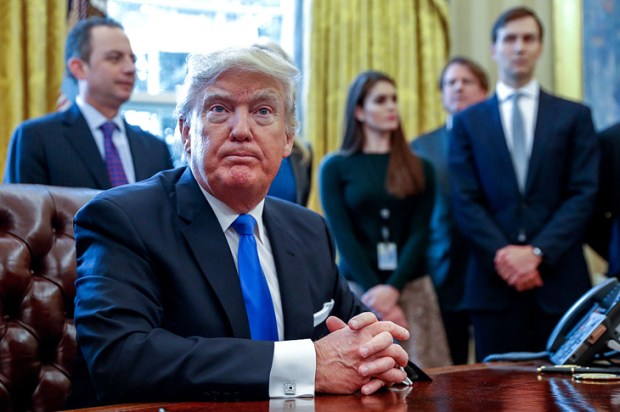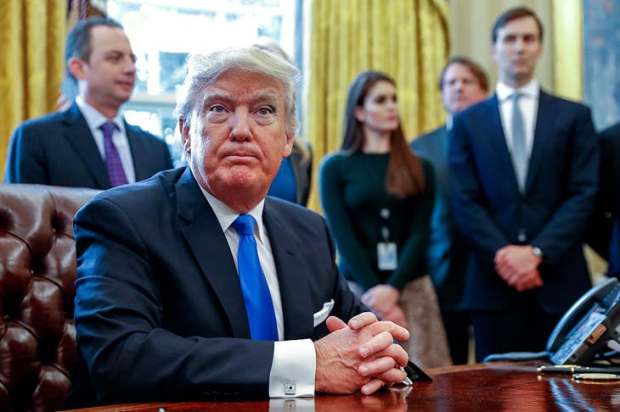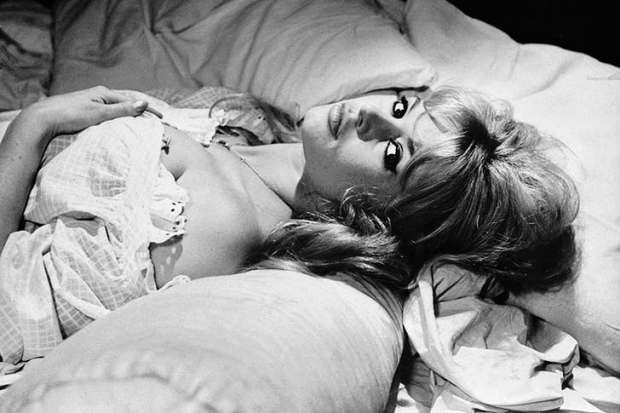While American conservatives, including Donald Trump and the Cuban exiles in Florida, whooped with joy at the news of the death of Fidel Castro, and while millions of America-haters throughout the world extravagantly mourned his passing, Barack Obama was circumspect. ‘History will record and judge the enormous impact of this singular figure on the people and world around him,’ he said. This was a restrained comment by an American president about a foreign leader whose 47 years of dictatorship had been sustained almost entirely by stirring up hatred of the United States; and we won’t have to wait for history’s verdict on his impact on that particular country, for we know already how enormous it was. He not only humiliated JohnF. Kennedy by repelling the Bay of Pigs invasion of 1961; he went on to drag the US to the brink of a nuclear catastrophe.
I was working in Milan in 1962 when Castro invited the Soviet Union to place nuclear missiles on Cuba within range of the United States. Moscow’s justification for doing this was that American missiles were already threatening Russia from Turkey and Italy, and there followed a nerve-racking crisis for which America took most of the blame in world opinion. Castro had already been seen as a hero for standing up to the world’s greatest power, and Italy, with its strong communist party, was especially seized with anti-American fervour.
Furthermore, I was a potential casualty of it. That, at least, was the fear of my employers, a Milanese publishing and printing company. No matter that I was British and commuting to work in a British Mini-Minor; they said the workers at the printing works would assume that I was American and would smash up my car, if not me as well. So I was ordered to stay home while the crisis lasted, and it finally ended when the Russians agreed to withdraw their missiles from Cuba because America had undertaken to remove its own ones from Turkey and had promised not to make any more unprovoked attacks on the Caribbean island.
It was some 40 years later, when Fidel Castro’s rule was approaching its end, that I paid my first visit to Havana. It was an odd experience because it wasn’t what I had expected. For while Cuba had relied on hatred of the United States to keep its revolution alive for more than 40 years, the Cubans seemed well disposed towards US tourists and to cherish memories of their country’s connections with America and Britain in pre-revolutionary days.
The Hotel Nacional, in which I stayed, proudly boasted that its guests had included Winston Churchill, Lucky Luciano, the ‘Duques’ of Windsor, George Raft, Walt Disney, Frank Sinatra, Naomi Campbell, and dozens of American film stars not usually associated with the socialist struggle. But a contrasting impression was offered by visiting the Museums of the Revolution and of the Ministry of the Interior, both of which were devoted in large part to the ‘terrorism’ of the US. America’s alleged acts of terrorism were impressively imaginative — from concealing explosives in shampoo bottles to infecting Cuban pigs with swine fever, from trying to kill Fidel Castro with exploding cigars to threatening the Cuban sugar crop with a deadly virus.
Havana was full of monuments, and there was said to be a recent one to Bobby Sands and the other Maze Prison hunger strikers, all heroes to Fidel Castro, though I never managed to find it. But I did find both the ‘Parque John Theodore Lennon’ and the ‘Jardín Diana de Gales’ thanks to an excellent book about Havana by Claudia Lightfoot, who understandably couldn’t see ‘the connection between a proudly socialist state and the most glamorous, media-hyped member of the British royal family’.
The Parque John Theodore Lennon was, according to Ms Lightfoot, ‘a less anomalous find in Havana than the Jardín de Diana’ because the Cubans had long suffered from Beatlemania. There had, however, been ‘general astonishment’ when, in December 2000, Fidel himself unveiled the life-size bronze statue of Lennon sitting on a park bench, for the Beatles had effectively been banned from Cuba in the Sixties and had never been heard on Cuban radio until after they had disbanded.
For all that, Castro was a brutal dictator who impoverished his people and trampled on their human rights. He is best gone. But he did at least save the beauty and unique charm of the city of Havana from the depredations threatened by the Americans before his arrival. Who will save it now?
Got something to add? Join the discussion and comment below.
Get 10 issues for just $10
Subscribe to The Spectator Australia today for the next 10 magazine issues, plus full online access, for just $10.













Comments
Don't miss out
Join the conversation with other Spectator Australia readers. Subscribe to leave a comment.
SUBSCRIBEAlready a subscriber? Log in